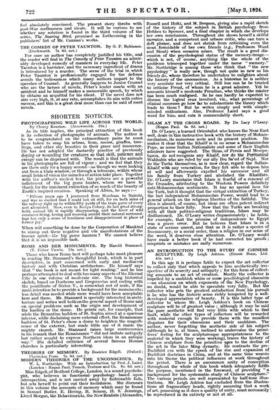In this age it is perhaps futile to expect the
art collector to collect only that which appeals to him aesthetically irre- spective of its scarcity and antiquity ; for this form of collect- ing amounts to an act of creation. Mostly the collector is impelled by a snobbish whim or some psychological obsession —an obsession on which exponents of the New. Psychology, no •doubt, would be able to speculate very fully. But the collector who gets the greatest satisfaction from his pursuit is he who has the historic sense richly tempered by a well- deVeloped appreciation of beauty. It is this latter type of collector to whom Mr. Leigh Ashton's book on Chinese sculpture will be of greatest value ; although it may be-said the .pure aesthetic will find very little with which to find fault, while the other types of collectors will be rewarded with material enough to provide them with the manifest disguises for their obsessions and their snobbism. The author, never forgetting- the aesthetic side of his. subject (although he is, at times, inclined to undervalue the primi- tives' feeling for the sculpturesque appropriateness to the material' in which they were working), traces the history of Chinese sculpture from the primitive ages to the decline of the art in the later Ming dynasty. He contrasts the pre- Buddhist era with the epoch of the rise and expansion of Buddhist doctrines in China, and at the same time weaves into his theme the political influences at work throughout the period. There is an uncommon unity of conception throughout the whole of this book which adequately fulfils the purpose, mentioned in the foreword, of providing " a background for -the systematic. study of- Chinese sculpture.P The various periods are well represented by half-tone illus- trations. Mr. Leigh Ashton has excluded from the illustra- tions all fragmentary heads, rightly assuming that a work of art, possessing as it does a quality of unity, must necessarily be reproduced in its entirety or not at all.














































 Previous page
Previous page